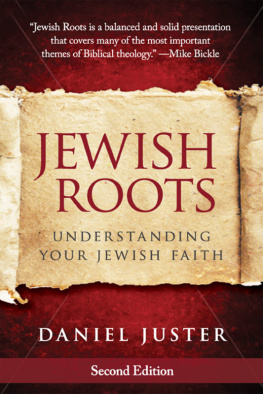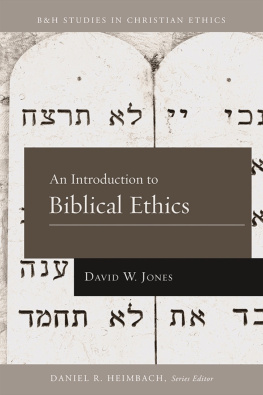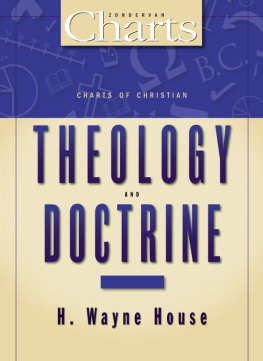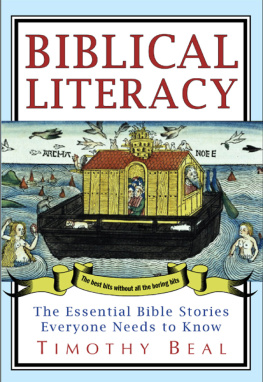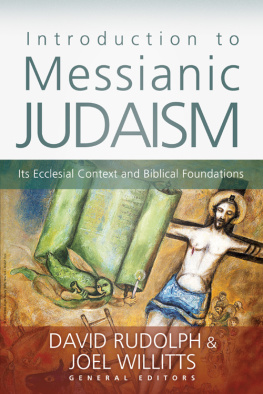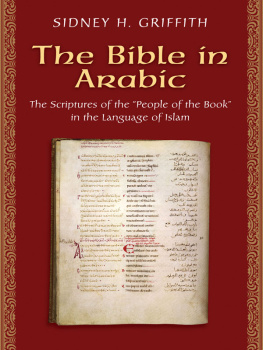THE ABINGDON
INTRODUCTION TO THE
BIBLE
THE ABINGDON
INTRODUCTION TO THE
BIBLE
Understanding Jewish and Christian Scriptures
Joel S. Kaminsky
Joel N. Lohr
Mark Reasoner

THE ABINGDON INTRODUCTION TO THE BIBLE:
UNDERSTANDING JEWISH AND CHRISTIAN SCRIPTURES
Copyright2014 by Abingdon Press
All rights reserved.
No part of this work may be reproduced or transmitted in any form or by any means, electronic or mechanical, including photocopying and recording, or by any information storage or retrieval system, except as may be expressly permitted by the 1976 Copyright Act or in writing from the publisher. Requests for permission can be addressed to Permissions, The United Methodist Publishing House, P.O. Box 801, 201 Eighth Avenue South, Nashville, TN 37202-0801, or e-mailed to .
Library of Congress Cataloging-in-Publication Data
Kaminsky, Joel S., 1960
The Abingdon introduction to the Bible : understanding Jewish and Christian scriptures / Joel S. Kaminsky, Joel N. Lohr, Mark Reasoner.
1 online resource.
Includes bibliographical references.
Description based on print version record and CIP data provided by publisher; resource not viewed.
ISBN 978-1-4267-5116-5 (epub) ISBN 978-1-4267-5107-3 (print) 1. BibleIntroductions. I. Lohr, Joel N. II. Reasoner, Mark. III. Title.
BS475.3
220.6' 1dc23
2014000287
Scripture quotations unless otherwise noted are taken from New Revised Standard Version of the Bible, copyright 1989, Division of Christian Education of the National Council of the Churches of Christ in the United States of America. Used by permission. All rights reserved.
Scripture quotations marked (CEB) are from the Common English Bible. Copyright 2011 by the Common English Bible. All rights reserved. Used by permission. www.CommonEnglishBible.com .
Scripture quotations marked (NIV) are taken from the Holy Bible, New International Version, NIV. Copyright 1973, 1978, 1984, 2011 by Biblica, Inc.TM Used by permission of Zondervan. All rights reserved worldwide. www.zondervan.com . The NIV and New International Version are trademarks registered in the United States Patent and Trademark Office by Biblica, Inc.TM
Scripture quotations marked (KJV) are taken from The Authorized (King James) Version. Rights in the Authorized Version in the United Kingdom are vested in the Crown. Reproduced by permission of the Crowns patentee, Cambridge University Press.
Scripture quotations marked (NASB) are taken from the New American Standard Bible, Copyright 1960, 1962, 1963, 1968, 1971, 1972, 1973, 1975, 1977, 1995 by The Lockman Foundation. Used by permission. ( www.Lockman.org )
Scripture quotations marked NJPS (New - Jewish Publication Society) are from TANAKH: A New Translation of The Holy Scriptures According to the Traditional Hebrew Text, copyright 1985 by the Jewish Publication Society of America.
Scripture quotations marked (AT) are the authors own translations.
Scripture quotations marked (Knox) are from Ronald Knox. The Knox Bible. London: Baronius Press, 2012.
14 15 16 17 18 19 20 21 22 2310 9 8 7 6 5 4 3 2 1
MANUFACTURED IN THE UNITED STATES OF AMERICA
I have learned much from my teachers, more from my colleagues,
and the most of all from my students.
Rabbi Judah Hanasi
CONTENTS
LIST OF ILLUSTRATIONS
Figures
Tables
ACKNOWLEDGMENTS
This book has benefited immensely from the input of a number of readers, even if at times we ignored elements of their sage advice. We want to thank especially Bradford Anderson, Garwood Anderson, Emily Branton, Richard Briggs, Anthony Le Donne, Rose Rotuno-Johnson, and Sarah Woodbury. We would also like to thank Smith College and University of the Pacific for providing various forms of funding and other resources that enabled us to collaborate in the writing process and obtain assistance with images (special thanks go to Martin Antonetti and Carmen Pullella). Lastly, we are indebted to the team at Abingdon Press, especially Kathy Armistead and Kelsey Spinnato, for their help and support in bringing this book to publication.
In this book we have striven to present an introduction to the Jewish and Christian Bibles in a clear and accessible manner. Our drive to do so is largely the result of our experiences in the classroom in which we have been challengedand rightly soto present complex matters in an accessible format. Further, our many excellent students have, at the same time, demonstrated that they are ready and willing to engage in complex and difficult questions if invited into the discussion without dumbing down the material. It is a delicate balance. So, we would like to dedicate this book to our students, those who have, past and present, taught us something of the importance of clear communication and have sharpened our arguments as well as presentations. We are delighted that some of you have gone on to become scholars yourselves and are now colleagues. We hope this book does justice to all that you have brought to our lives.
A NOTE TO THE READER
Throughout this work we refer to passages in the Bible according to a standardized convention, which first indicates the biblical book, then the chapter number, followed by a colon, and then the verse number (or numbers). The books of the Bible can be found in the tables of contents of most Bibles. In order not to overwhelm the beginner, we have kept biblical citations to a minimum; at times we use only one representative reference, and when possible we cite only the chapter without verse numbers.
There are a number of different expressions used to describe those books of the Bible that were originally written in Hebrew including: the Hebrew Bible (which scholars use to describe this collection); the Tanakh, Jewish Bible, or Jewish Scriptures (which refers to the same collection from a Jewish religious vantage point); and the Old Testament (a term used by Christians to describe the first part of the two-part Christian Bible, which contains a second major section called the New Testament). Because our discussion ranges through various contexts (Jewish, Christian, and secular), we use each of these terms when they are appropriate.
We have tried to bring our classroom voice into this book and thus we do our best to avoid technical jargon and to define terms that might be unfamiliar to readers when we first use them. In addition, the reader will find an approximate chronological timeline for the biblical period on pages 4849. Most of our translations of the Bible are drawn from the New Revised Standard Version, even while we recognize that there are many excellent translations including the Common English Bible. However, in places we use our own translation in order to convey the flavor of the original Hebrew or Greek (marked AT). Finally, to put the reader in touch with the original biblical languages, on occasion we include important Hebrew and Greek words in a simple phonetic transliteration.
ABBREVIATIONS
AT | Authors Translation |
BCE | Before the Common Era (equivalent to BC, Before Christ) |
CE | Common Era (equivalent to AD, Anno Domini) |
D | Deuteronomistic Source |
DH | Documentary Hypothesis |
E | Elohist Source |
Next page


